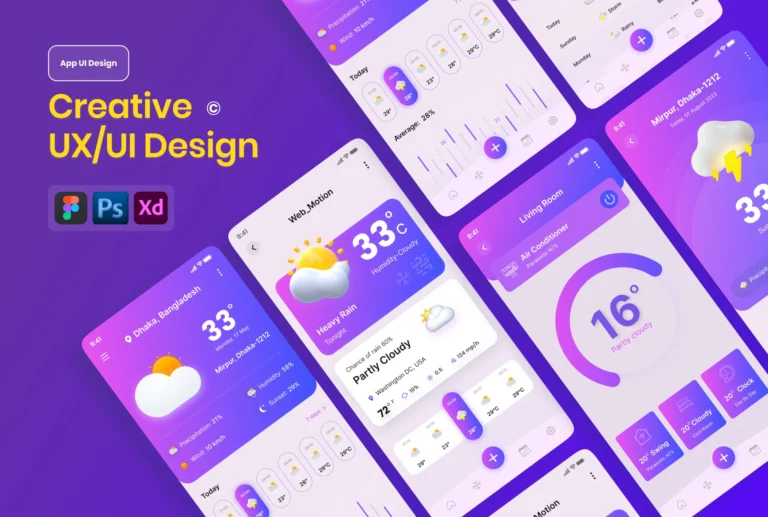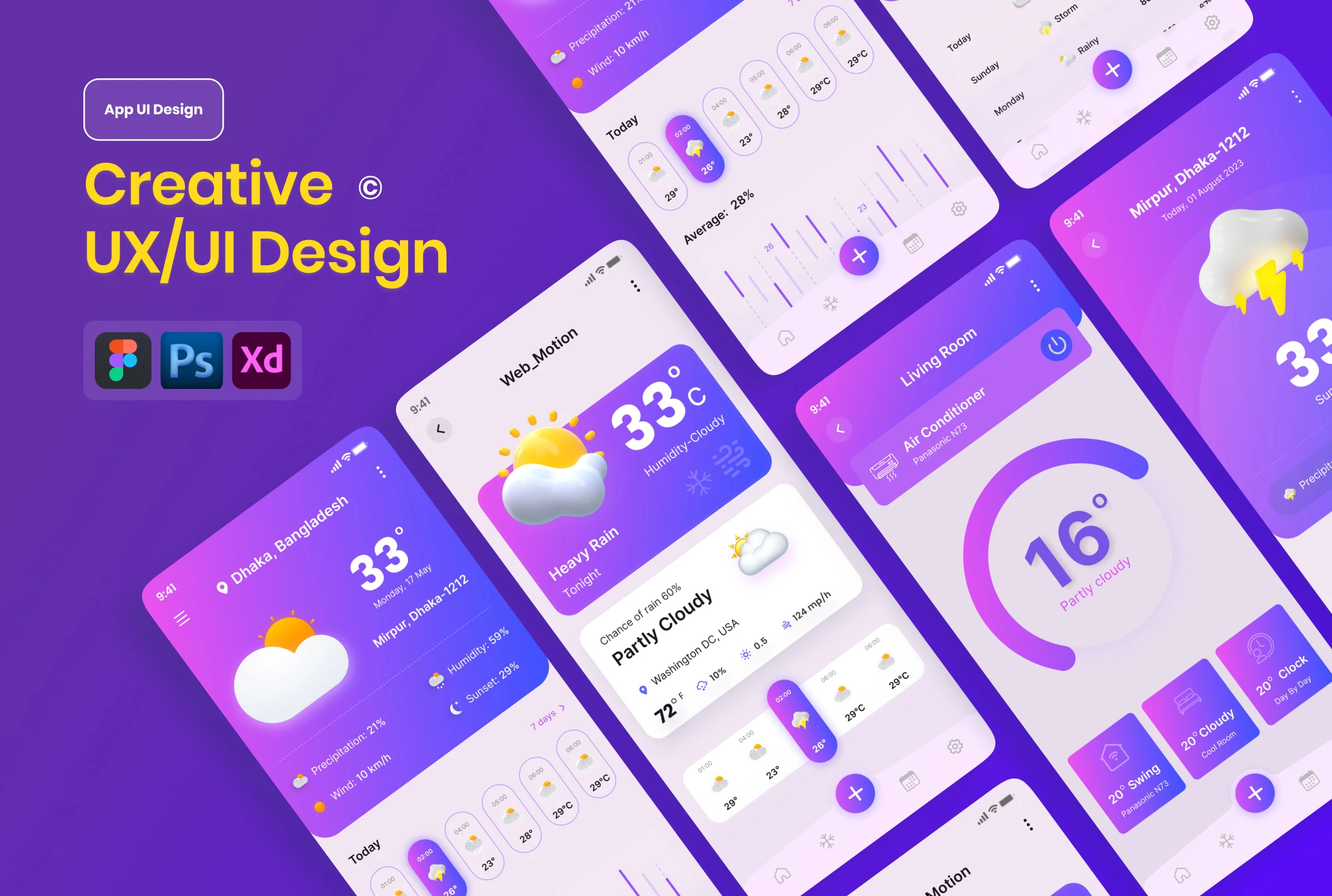Introduction
Gone are the days when desktop computers were the primary mode of communication. Today, these devices have taken a backseat to smartphones, which we use constantly whether at home, work, or on the go. They have become an indispensable part of our daily lives.
Given this trend, it is prudent for organizations aiming to establish a strong market presence to invest in mobile applications and websites.
The mobile app market is saturated across various sectors including education, hospitality, healthcare, travel, and retail. Hundreds of mobile apps are launched daily, reflecting the booming growth of the global mobile application market, projected to reach USD 653.91 billion by 2025 with a CAGR of 21% from its 2019 valuation of USD 154.05 billion.
Creating a standout mobile app has thus become a challenging yet essential endeavor, demanding developers to innovate consistently with each project.
It’s crucial to understand that the design and user experience (UI/UX) of an app play a pivotal role in making a quick and lasting impression on users when they download an app from the app store. The success of every mobile app hinges on effective UI/UX design services.
Globally, there are more than 6.3 billion mobile phone users, and the Google Play Store alone offers 2.89 million apps for download.

Defining UI Design in Mobile Apps
UI, or User Interface, refers to how users interact with mobile applications. The goal of UI design for mobile apps is to ensure that interactions between users and the application are simple, enjoyable, and effective.

UI in mobile app development encompasses all elements allowing users to interact with screens, displays, or overlay buttons. Its primary objective is to facilitate seamless interaction.
Defining UX Design in Mobile Apps
UX, or User Experience, focuses on creating systems that provide optimal user experiences. Upholding UX principles ensures that satisfied users become loyal customers. UX governs a user’s journey through a mobile app or website, influencing the success of a business.

UI and UX design in mobile app development are interdependent and essential for an app’s success.
Difference between UI and UX
Differentiating between UI and UX is crucial. While both terms are often used interchangeably, they serve distinct roles in design. UI concerns itself with the app’s appearance and how well it meets user requirements to ensure user satisfaction.

In UI/UX design services, UX orchestrates a systematic approach to enhancing user satisfaction by improving app usability. Together, UI and UX are indispensable for an app to function effectively and achieve its goals.
Deliverables of UI/UX App Design Development
The work of UI/UX designers encompasses several stages, each producing deliverables aimed at enhancing client communication, documenting progress, and effectively presenting ideas during Android and iOS app development. Both UI and UX have their respective deliverables; here’s an overview to underscore the importance of mobile app UI/UX design in the development process.
Key UI/UX Services
Mood Boards
Mood boards serve as visual representations to illustrate new ideas clearly.

They aid in conveying app concepts efficiently to clients, replacing lengthy presentations with concise visual summaries.
Dynamic Prototyping
Dynamic prototypes refine overall app functionality, allowing adjustments as necessary.

Mobile app development companies leverage dynamic prototypes to tailor UI according to client preferences.
Visual Designs
Visual designs provide insights into design elements such as photography, typography, spacing, colors, layouts, and images.
UX Deliverables
User Personas
Creating user personas helps designers understand and articulate customer needs and behaviors.
Competitive Analysis Report
A competitive analysis report assesses market competition to position an app effectively.
User Journey Maps and User Flows
Experience maps detail user interactions with a product, including expectations, time spent, emotions, and desires.
User journeys or flows outline how users interact with a product across different stages, guiding app development.
Interactive Prototypes
Interactive prototypes demonstrate how final products function, facilitating effective communication of design concepts.
Having explored the definitions of UI and UX and their critical roles in mobile app development, we now turn to the significance of UI/UX design in delivering a customized product.

Significance of Mobile App UI/UX Design Services
Understanding the importance of UI/UX design in app development is paramount. While developers may create technically sound apps, neglecting design can lead to their downfall. Balancing functionality and aesthetics through UI/UX design is challenging yet essential.
Ease of Use
A well-designed app enhances user experience through intuitive navigation and visual appeal.
Engagement
UI/UX designs captivate users, encouraging sustained interaction with the app.
First Impressions
Effective UI/UX design leaves a positive first impression, crucial for startups and small businesses.
Source
App Store Visibility
Apps with strong UI/UX garner positive user reviews, boosting visibility in app stores.
Customer Loyalty
Apps like Instagram and Facebook exemplify how excellent UI/UX fosters user loyalty through satisfying experiences.
User Satisfaction
UI/UX design tailored to user preferences enhances satisfaction, ensuring app usability.
Cost and Time Savings
Sound UI/UX practices reduce maintenance and update costs post-launch, minimizing post-deployment challenges.
Brand Building
Investing in UI/UX design enhances customer satisfaction, fostering brand loyalty and credibility.
Increased Traffic
User-friendly UI/UX design retains users, driving traffic and conversions.
Unique Identity
Distinguishing your business through superior UI/UX design attracts and retains users.
Ensuring Successful UI/UX Design through Mobile App Design and Development Services
Choosing the right mobile application design and development services is critical for success. Consistency in UI elements like buttons, icons, colors, and symbols fosters user confidence and enhances app usability.
Source
Engagement and Consistency
Creating engaging app experiences through consistent design across all interfaces.
Speed and Efficiency
Optimizing app performance ensures swift and seamless user interactions.
Simplicity
Streamlining UI design simplifies user interactions, enhancing app usability.
User-Centered Design
Collaborating with experienced UI/UX designers ensures apps meet user expectations and behaviors.
Platform-Specific Design
Adopting platform-specific UI/UX designs for iOS and Android enhances user experience.
Initial UI/UX Development Approach
Focusing on essential elements in UI/UX design prevents clutter and enhances user focus.
Understanding Users
A thorough understanding of target users ensures a tailored app experience, enhancing user satisfaction.
Partnering with a reputable app design and development company ensures superior mobile UI/UX design services.
Impact of Effective UI/UX Design on Mobile App Success
User-centric UI/UX design drives user engagement and retention, essential for app success.
Conclusion
UI and UX designs are pivotal in establishing brand identity and enhancing online visibility in today’s digital landscape. Users expect seamless experiences from mobile apps, emphasizing the importance of intuitive and engaging UI/UX design.
A flawless UI/UX design elevates your company’s visual identity and sustains growth. Embrace current UI/UX design trends and techniques to stand out in today’s competitive app market.
Are you seeking a mobile app development company to deliver a superior app tailored to your business needs?
Look no further! Consult our UI/UX experts at Pixelhive to get started!
Let’s connect!




